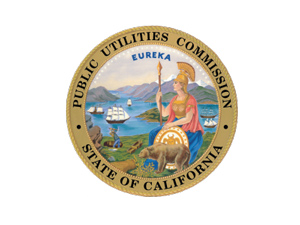May 14, 2021 - SAN FRANCISCO - On Thursday, the Wildfire Safety Advisory Board (the Board) approved Recommendations on the 2021  Wildfire Mitigation Plan Updates for Small and Multi-Jurisdictional Utilities (SMJU) at its May 12, 2021 Board meeting.
Wildfire Mitigation Plan Updates for Small and Multi-Jurisdictional Utilities (SMJU) at its May 12, 2021 Board meeting.
Assembly Bill 1054, signed into law in July 2019, created the California Wildfire Safety Advisory Board, a board of independent expert advisors, with two primary functions: First, to advise the new Wildfire Safety Division within the CPUC on wildfire safety measures, including plans written by utilities, so the CPUC could more effectively regulate the safety of investor-owned utilities. Second, to review the Wildfire Mitigation Plans submitted by electric publicly owned utilities and cooperatives and provide an advisory opinion. The Wildfire Safety Advisory Board also serves as an additional forum for the public to provide input on the important topic of wildfire safety.
The Board’s approved Recommendations on the 2021 Wildfire Mitigation Plan Updates for SMJUs are available at www.cpuc.ca.gov/wsab.
The recommendations address four key topics, and a brief overview is provided below:
RISK ASSESSMENT AND RESOURCE ALLOCATION
- Risk modeling, assumptions, and methodology: Request further detail about modeling methods, assumptions, and how the outputs of models are used in decision making. Request more details about their risk scoring and methodology.
- Machine learning: Request more detail about how the SMJUs use machine learning, explain how they quantify uncertainties, and how the machines recognize patterns.
- Scientific Review: Request the creation of a formalized scientific review process and a common data system or platform.
- Qualified expertise: Request the IOUs and SMJUs provide detailed descriptions of the background, experience, and qualifications of consultants or staff completing risk modeling and fire risk mapping work. Require the SMJUs to hire or contract with ecologists or fire scientists.
VEGETATION MANAGEMENT
- LiDAR for vegetation clearances: Clarify that LiDAR inspections shall not replace visual inspections and annual LiDAR inspections shall be used in addition to visual patrol inspections. Require SMJUs to follow the POUs and IOUs best practices for visual inspections.
- Tree growth regulators and herbicides: Request further details about SMJUs use of tree growth regulators and herbicides.
- Qualifications of workers performing mitigations: Require in-house staff with minimum qualifications in vegetation management and ecological science.
SYSTEM DESIGN AND GRID HARDENING
- Asset inspection cycles and safety: Require an increase to more detailed, invasive inspections. Require SMJUs to follow the POUs and IOUs best practices for visual and detailed inspections. Require SMJUs to employ the most up to date technology, such as infrared, to adequately examine the infrastructure within high fire threat districts (HFTD).
Prioritizing grid hardening measures: Request more information about prioritizing mitigations efforts, the rate of project completion, methodologies used to determine effectiveness of hardening efforts, and any barriers to infrastructure replacement actual role concerning mitigation work. SMJUs should consider developing a larger internal workforceactual role concerning mitigation work. SMJUs should consider developing a larger internal workforce. - Workforce training and qualified personnel: Request explanation of how personnel are deployed, the personnel constraints, as well as how contract inspectors are chosen and theiractual role concerning mitigation work. SMJUs should consider developing a larger internal workforce.
- Advanced fault protection: Request explanation of (1) how fault interrupting equipment is checked, (2) SMJUs’ use of infra-red inspections, and (3) whether lighting arrestors in the HFTD are changed to CAL FIRE arrestors.
- De-energization of idle lines: Require an evaluation of the feasibility of de-energizing idle lines.
EMERGENCY PLANNING AND COMMUNICATION
- Public outreach and communication: Request more information about customers feedback about the SMJUs’ communication and outreach efforts and assess whether they are using the appropriate metrics. Request an expansion and refinement of outreach to the access and functional needs community and vulnerable customers. SMJUs should continue improving their communication and outreach.
The May 12, 2021 Board Meeting can be viewed at www.adminmonitor.com/ca/cpuc/wildfire_safety/202105122.
Additional information is available at www.cpuc.ca.gov/wsab or by emailing WildfireSafetyAdvisoryBoard@cpuc.ca.gov.
Source: CPUC








